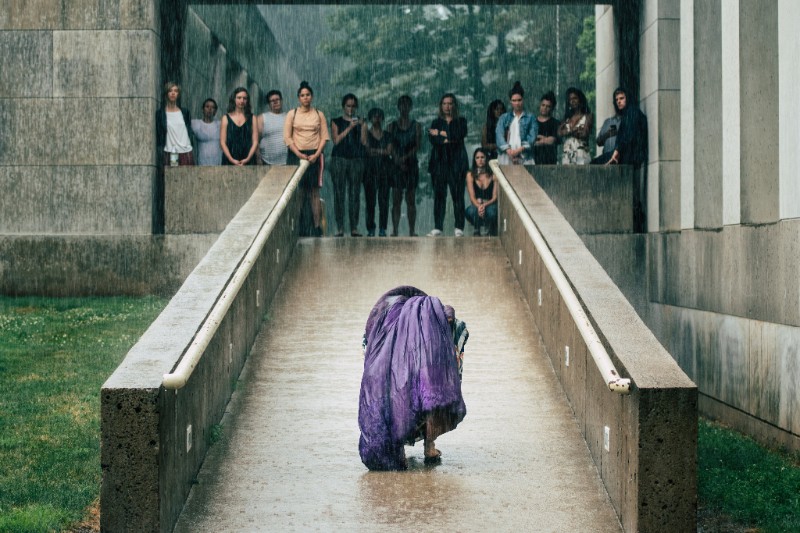
c/o wesleyan.edu
In an effort to expand and enrich campus engagement with the arts, the University has applied for and received a grant to host artists-in-residence as they develop original work. The grant, awarded by the Andrew W. Mellon Foundation, totals $250,000 and will be spent over the course of three-and-a-half years.
The Wesleyan Center for the Arts (CFA) will house the project. Three artists will be hosted over the course of three years, each teaching and working on campus for a year. Throughout their time in Middletown, artists will develop a semester-long course as well as a visual or performance piece with student apprentices that will be exhibited at the end of the residency.
Associate Provost Mark Hovey noted that this grant will expand the level of interaction with the arts on campus, as well as the duration of time artists spend on campus. While artists have previously resided in Middletown and worked with students and faculty, the University has rarely hosted artists for such a long period of time.
“The grant came about as part of a longer discussion about deepening student engagement with visiting artists,” Hovey wrote in an email to the Argus. “Generally visiting artists come to the CFA for a single performance or exhibition, during which time they engage with students through classes and workshops as well as the performance itself. This works well, but we wanted to try a longer arc of campus involvement, where an artist develops one or more pieces while in residency at Wesleyan. In this way, students can see behind the curtain, from the initial idea of a performance or exhibition through to the premiere.”
Director of the Office of Corporate, Foundation, and Government Grants Carol Scully, along with CFA Director Sarah Curran, wrote much of the grant over the course of the summer of 2018. University Provost and Senior Vice President for Academic Affairs Joyce Jacobsen also worked on the grant proposal, along with Hovey. The proposal was also generated in conversation with President Michael Roth ’78.
Jacobsen emphasized the value of hosting artists in the context of the Wesleyan and wider Middletown communities.
“The grant will help facilitate deeper involvement by our visiting artists,” she explained in an email to The Argus. “Besides having them stage projects and installations in the Zilkha gallery and other venues, we like to bring them to campus for longer, more involved stays, preferably including classroom work, artist talks, and other interactions with the Wesleyan and wider communities.”
A major emphasis of the project will be the use of an interdisciplinary approach, promoting artist engagement with various departments within the Wesleyan community. Courses taught by artists-in-residence will be cross-listed with relevant departments. Curran and Hovey also anticipate that courses will be available to students from diverse academic backgrounds, and not only students of the arts. Additional importance will be placed on ensuring public access to the visual and performance pieces.
“Each artist will engage with the community in different ways unique to their own practice,” Curran explained. “The artists we are considering for this project have interests that connect to social justice movements, urban development, and the impact of art on community and economic development. The very nature of their work will create connections to the greater Middletown and Connecticut communities, but the details of each engagement are yet to be determined.”
The University has received grants from the Mellon Foundation previously. Currently, a grant from the Mellon Foundation is in use to support the University’s Center for Prison Education, which is a program that gives incarcerated individuals the chance to take courses taught by University faculty, and work with University students, for college credit. The Mellon Foundation has also awarded the University a grant that supports the Center for Pedagogical Innovation, which provides staff with the resources, assistance, and training necessary to teach innovative courses. Via this grant, the University will hire a postdoctoral fellow in Interdisciplinary Art Practice, who will work with the artists-in-residence under the new Mellon grant.
“The emphasis on interdisciplinary work in both Mellon grants is a long-standing Wesleyan tradition,” Hovey explained. “While our faculty are deeply committed to their disciplines, they have always strived to build bridges across disciplines to bring disparate ideas and people together. We hope and expect that this fellow and the Mellon artist residencies will work together with the CFA and Wesleyan’s outstanding faculty in and out of the arts to make the Wesleyan student experience in the arts even better than it already is!”
Artists have been hosted by various departments previously, including choreographers and dancers Allison Orr in 2015-16 and Eiko Otake in 2017-18, both of whom were hosted by the College of the Environment. Another model of hosting artists-in-residence was developed in a Winter Session course taught by Visiting Instructor of Liberal Studies Tom Pearson, in which students developed a theater performance with an established theater professional.
“Each residency will be different, of course,” noted Hovey, “but students will be involved both through courses and through fellowship or internship opportunities to work with the artists.”
Curran noted that she and her team are currently in discussion with a few artists to determine who will be the first to come to campus. The first artist will be hosted beginning in July, during which time the artist will work with summer interns. The artist will then continue to reside on campus beginning in the Fall of 2019.
Emmy Hughes can be reached at ebhughes@wesleyan.edu or on Twitter @spacelover20.
Comments are closed